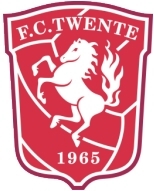 Last weekend FC Twente was crowned as the new Dutch national football champions. This may have come as a surprise to many, certainly given the club’s history of almost being bankrupt just 7 years ago in the 2002/03 season. Strong leadership, a prudent policy, a strong team with high self esteem and a solid fanbase are the main pillars behind the success. We explain why.
Last weekend FC Twente was crowned as the new Dutch national football champions. This may have come as a surprise to many, certainly given the club’s history of almost being bankrupt just 7 years ago in the 2002/03 season. Strong leadership, a prudent policy, a strong team with high self esteem and a solid fanbase are the main pillars behind the success. We explain why.
FC Twente? Foreigners may ask FC Who? However that would do the club injustice. FC Twente has been around in the Dutch League since 1965 and is a household name to the Dutch. The club only relegated once, played many times in Europe and sees itself as the pride of the eastern part of The Netherlands (note that FC Twente is named after a region in the East). In all these years the club never managed to become Dutch national champion albeit that they were very close in 1973/74, when they just lost out to Feyenoord. In the 2002/03 season the club went almost bankrupt but since then it has risen from its ashes with this year’s championship being the cream on the pie. It has not been the locker room mental pep talk of Al Pacino which has brought the club this success but a mixture of different reasons, which we explain below.
1. The team. More than any other club in the Dutch Eredivisie (Premier League) FC Twente has been an example of a team without any prima donnas. There may have been stronger teams in the league, but none of them showed as much unity and mental toughness as FC Twente. With team discipline and character, the team won a lot of its matches in the last quarter of its games. Bryan Ruiz, Nkufo and Douglas are probably the big names in the team, but mentioning only these guys would fail to recognize the effort of all the other players, without whom Ruiz, Douglas and Nkufo would not have been able to excel.
2. The coach and staff. The success of FC Twente is also the success of coach Steve McClaren. After having been written off in the UK, McClaren has come back with a vengeance. In just 2 years time, he managed to make the club national champion, after having already finished in the number 2 position last year, so no coincidence here. This should be seen as a formidable achievement, particularly given the number of important players that left the club last year. Few people would have given even a dime for Twente’s chances after the departure of Braafheid, Elia and Arnautovic. However, their replacements Tiendali, Ruiz and Stoch proved them wrong. The merits for this should clearly go to McClaren and his technical staff (including the scouts).
3. The Management. As stated earlier, FC Twente almost went bankrupt just 7 years ago with debt of around EUR 14mln, were it not for Herman Wessels and its current chairman Joop Munsterman, who took charge in 2004. Munsterman, who made his career in the newspaper business, has been the big architect behind the revival of FC Twente. He is known as a tough reorganiser and negotiator. With the help of Enschede, several sponsors and the founders of the stadium, he managed to salvage FC Twente and wrote black figures in 2005 and ever since. Thrift, prudence and hard work have been the main elements of Munsterman’s policy. He managed to grow the budget from just EUR 11mln in 2003 to EUR 33mln in the current season, making Twente the 4th biggest club of The Netherlands as far as turnover is concerned. With the prospects of the Champions League, this budget should grow even further to well above EUR 40mln in the coming year, implying the club will pass Feyenoord. Twente’s new stadium, the “Grolsch veste” has been instrumental behind this growth. In 2008 the club moved into this 24,000 spectator stadium, increasing capacity by 11,000 and hence substantially increasing turnover. This year capacity will be further increased to 32,000. The club managed to obtain the ownership of the stadium through a mortgage loan. However, the incremental operating income (including catering etc) of the stadium more than compensates the financial charges of these loans. Although debt is substantial (> EUR 30mln) and will rise further with the current expansion, this should be no problem. Firstly this debt is largely related to the stadium (serving as collateral). Secondly FC Twente is paying off this debt as the club is generating positive cash flow and also is using part of the proceeds on players. Secondly, players are valued at zero on the balance sheet! Thirdly, player salary costs are relatively low at only 52.4% of sales.
Hence, from a financial point of view, FC Twente is one of the healthiest clubs in The Netherlands, which is reflected by the category 3 rating of the Dutch Football Union. All in all one can say that the management team of FC Twente has done a remarkable job! And the end is not in sight. No doubt Munsterman and friend will try to further leverage the function of the stadium; there are plans to make the Grolsch veste a regional centre for science, education, sports and recreation. A hotel, railway station, congress center, offices, skating hall, healthcenter etc should arise. Hence plenty of room to leverage!
4. The region and fanbase. FC Twente’s fanbase has been instrumental for its success. The club has always had a very loyal fanbase. The values of the club are football, atmosphere and solidarity, whilst the club is a symbol for the region. Hence the club has 10 official supporters clubs spread across the region. This hinterland should guarantee that the new extra capacity of the stadium will be filled up. The success of the club should fill the traditional laid back and reserved population with confidence, which should be good for the region. Additionally FC Twente is one of the leading clubs as far as socially responsible policy is concerned being active in many different educational and public health projects in the local district, an example of being good neighbours. This is exactly what Twente binds and connects to the region and vice versa.
5. The league. Clearly the Dutch Eredivisie is not what is used to be. Quality has clearly detoriated and the height of a budget is by no means a guarantee for winning the league. Ajax, PSV and Feyenoord used to win the league each and every year, but these clubs no longer manage to outpace the competition as FC Twente and AZ last year have clearly proven. The main reason has been that it has become increasingly difficult to retain top talent. Obviously this has resulted in a nore exciting competition but clearly at the expense of quality.
The miracle of the east; FC Twente has proven it can be done! A club can become champion with a solid policy, good financial management and a good technical staff. In contrast with AZ Alkmaar, which entirely depended on a rich maecenas, the FC Twente model looks more sustainable. Nevertheless, the proof will be in the eating of the pudding. Twente will face two major challenges in the coming year; the pressure of being national champions and the departure of several key players (Ruiz, Douglas, Perez?) and possibly Steve McClaren. That won’t be easy and chances of a repeat performance are likely slim. So we said last year…….but then again, maybe it pays off to just put in that dime of last year……….

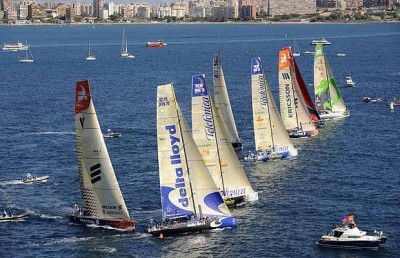
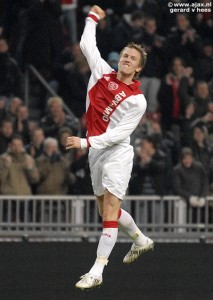
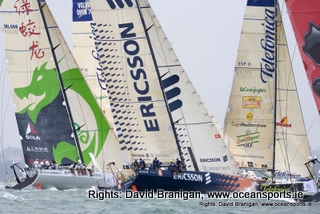
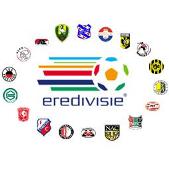

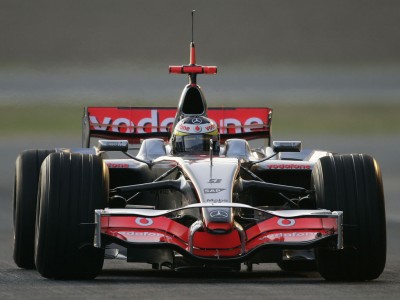
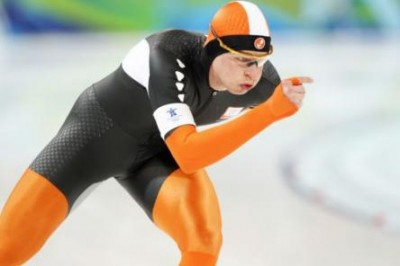 Whereas at the beginning of the Winter Games Sven Kramer of The Netherlands was widely seen to become the athlete winning the most gold medals, he did not manage to indeed become the king of the Games, mainly due to an unintended mistake of his coach. Local marketing buffs claim this mistake could turn out to be extremely expensive, costing him millions of dollars. I doubt whether this will be true; although his claim to international fame has not materialised to the extent he would have hoped, this should be more than compensated by his increased popularity at home, where he found a whole new bunch of supporters admiring him for the way he dealt with this issue.
Whereas at the beginning of the Winter Games Sven Kramer of The Netherlands was widely seen to become the athlete winning the most gold medals, he did not manage to indeed become the king of the Games, mainly due to an unintended mistake of his coach. Local marketing buffs claim this mistake could turn out to be extremely expensive, costing him millions of dollars. I doubt whether this will be true; although his claim to international fame has not materialised to the extent he would have hoped, this should be more than compensated by his increased popularity at home, where he found a whole new bunch of supporters admiring him for the way he dealt with this issue.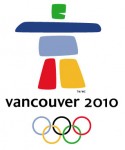 With a large part of the Olympic Winter Games in Vancouver now behind us, it is interesting to notice that the Games continue their unbridled growth both in terms of participating athletes and nations as well as in the number of events. However, this comes at a expense. Whereas since 1980 (Lake Placid) the number of athletes and events have increased by 2.5x and 2.3x respectively, the expenses related to the games have increased by a staggering 13x and when compared to 1984 (Sarajevo) even by 20x! This exponential increase is clearly not sustainable going forward. Since Lake Placid the number of events, athletes and nations has more than doubled.
With a large part of the Olympic Winter Games in Vancouver now behind us, it is interesting to notice that the Games continue their unbridled growth both in terms of participating athletes and nations as well as in the number of events. However, this comes at a expense. Whereas since 1980 (Lake Placid) the number of athletes and events have increased by 2.5x and 2.3x respectively, the expenses related to the games have increased by a staggering 13x and when compared to 1984 (Sarajevo) even by 20x! This exponential increase is clearly not sustainable going forward. Since Lake Placid the number of events, athletes and nations has more than doubled.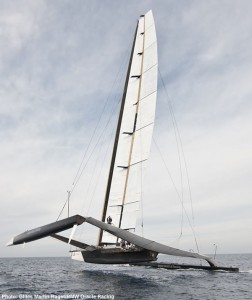 Looking back at the 33rd edition of the Americas Cup, the conclusion is one of mixed feelings. In disgust over the countless courtcases, fights, manipulation, postponements and enormous egos of the two owners of both syndicates. In awe of watching the magnificent display of technology and raw power of the BMW Oracle and to a less extent Alinghi. And full of enthusiasm when watching the actual race. That pretty much sums it up. Clearly, awe and enthusiasm have taken the upper hand during the last week. In that perspective it is sad to conclude that the 33rd Americas Cup will likely end up in the history books as one of the most controversial ones, very similar to the Americas Cup of 1988, when Dennis Connor won the cup with his Stars and Stripes. It is to hope that, again similar to what happened after1988, the 34th Americas Cup will regain some of its lost reputation, a big responsibility for the parties involved.
Looking back at the 33rd edition of the Americas Cup, the conclusion is one of mixed feelings. In disgust over the countless courtcases, fights, manipulation, postponements and enormous egos of the two owners of both syndicates. In awe of watching the magnificent display of technology and raw power of the BMW Oracle and to a less extent Alinghi. And full of enthusiasm when watching the actual race. That pretty much sums it up. Clearly, awe and enthusiasm have taken the upper hand during the last week. In that perspective it is sad to conclude that the 33rd Americas Cup will likely end up in the history books as one of the most controversial ones, very similar to the Americas Cup of 1988, when Dennis Connor won the cup with his Stars and Stripes. It is to hope that, again similar to what happened after1988, the 34th Americas Cup will regain some of its lost reputation, a big responsibility for the parties involved.